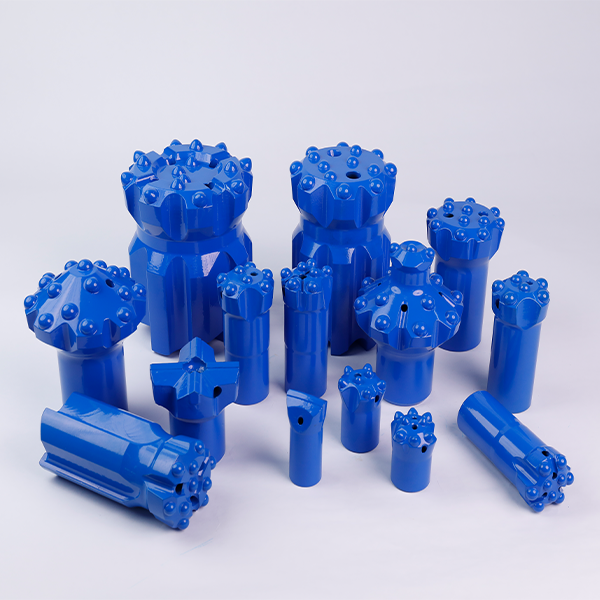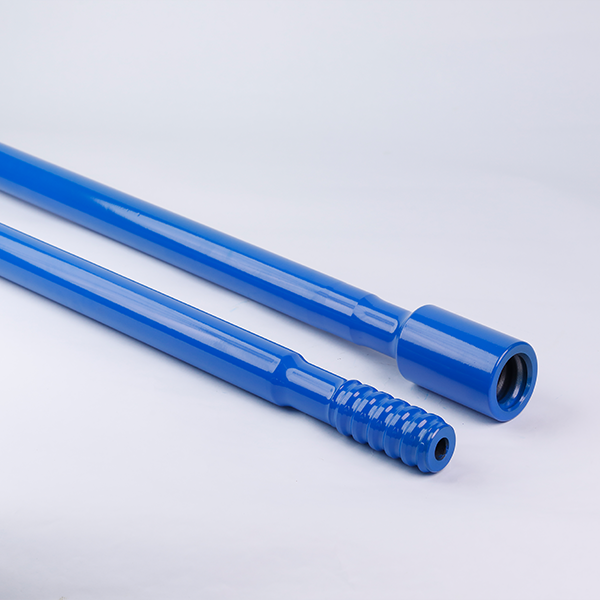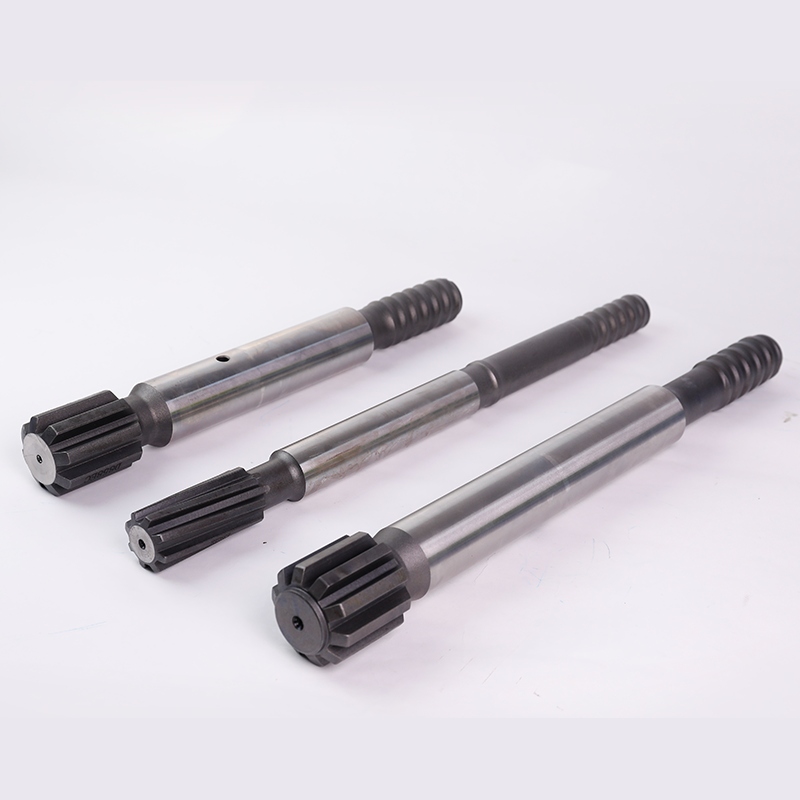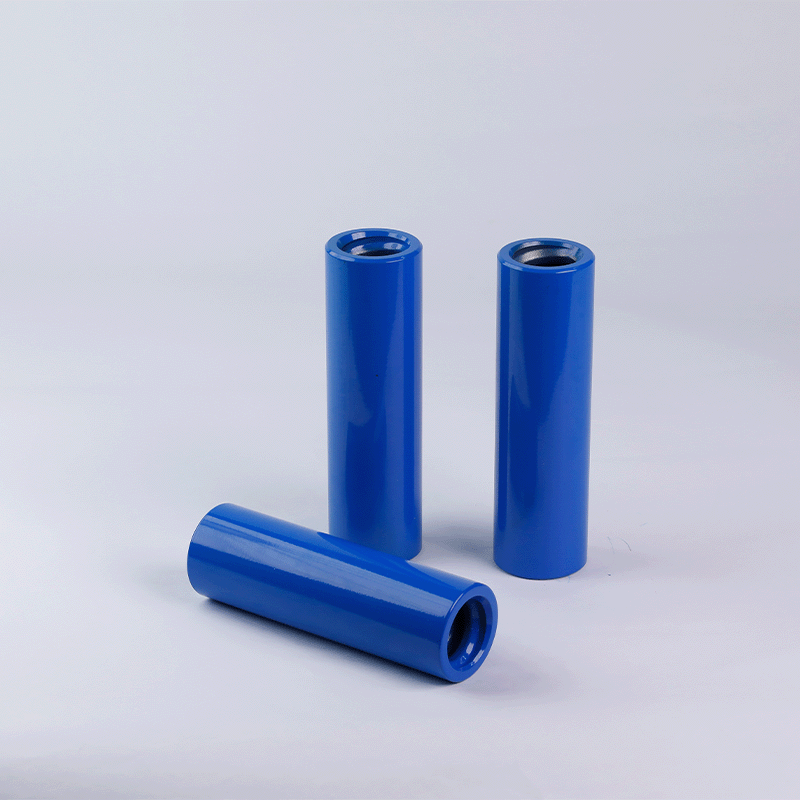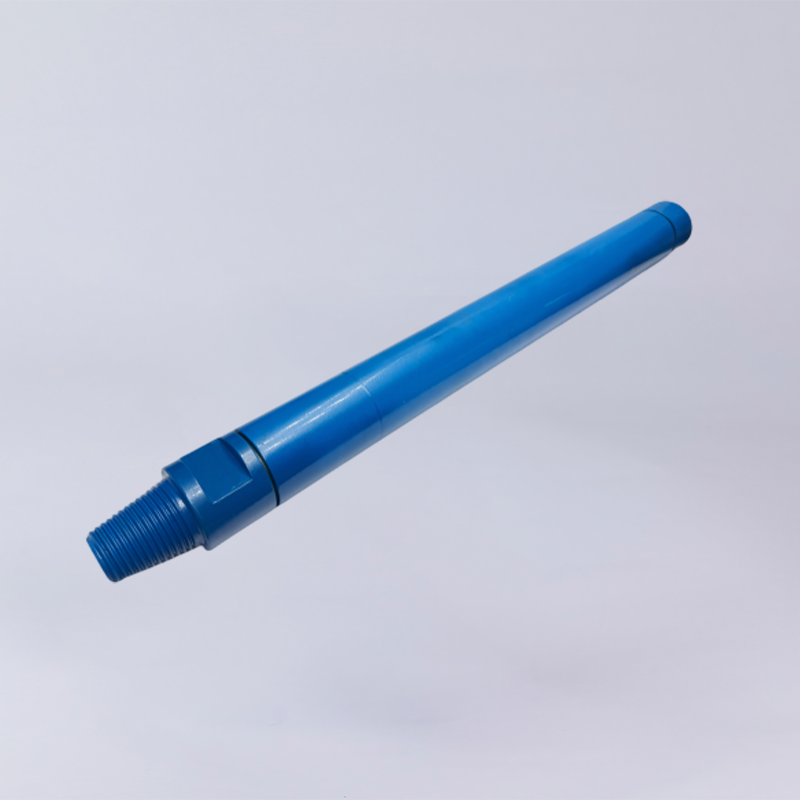In underground engineering, diaphragm walls are a critical technology for soil retention, waterproofing, and foundation support for high-rise buildings. However, when construction reaches bedrock strata, traditional methods, such as grab dredgers or impact drills, often face several challenges, including slow progress, poor quality of trench formation, difficulty in correcting hole deviations, and severe drill bit wear. In this context, down-the-hole (DTH) hammers offer an effective solution. This article will explore how down-the-hole hammers can solve the problem of drilling holes in bedrock formations and demonstrate their application in the construction of underground continuous walls.
Traditional Challenges of Drilling in Bedrock Strata
High Rock Strength, Low Drilling Efficiency
In bedrock formations, rock hardness is often high, with strongly weathered layers reaching 50 MPa to 80 MPa and weakly weathered layers exceeding 100 MPa. Traditional percussion drills only advance a few centimeters per hour during drilling, severely affecting construction progress.
Inclined Rock Surface, Deviated Holes
Bedrock surfaces often have slopes, causing drill bits to deviate from the planned trajectory during drilling, which leads to issues with hole inclination. It not only impacts trench quality but also increases the cost and difficulty of subsequent corrections.
Non-uniform Rock Quality, Increased Drilling Difficulty
Within the same trench segment, there may be significant variations in rock quality, with large differences in strength and integrity. These irregularities can cause drill bits to get stuck or deviate from the intended path, making drilling more difficult.
Severe Drill Wear, High Costs
Drilling in hard rock leads to rapid wear on drill bits, necessitating frequent replacements. It increases both construction costs and project duration.
Advantages of DTH Hammers
Efficient Drilling, Shorter Construction Time
The down-the-hole hammer is powered by compressed air and directly impacts the drill bit at high frequency, achieving efficient fragmentation of bedrock. In rock layers with a strength of 100 MPa, the down-the-hole hammer can achieve a drilling speed of 2 to 3 meters per hour, far exceeding the drilling speeds of traditional impact drills and rotary drills. This means that using a down-the-hole hammer for bedrock drilling can significantly shorten the construction period and improve construction efficiency.
Strong Adaptability to Complex Geology
DTH hammers are highly adaptable to different bedrock strata. They can drill efficiently through fractured rock, sloped surfaces, and high-strength bedrock layers. The parameters like impact frequency and impact power can be adjusted according to geological conditions, addressing various challenges.
Cost Reduction
Using DTH hammers for drilling in bedrock reduces overall construction costs when compared to traditional trenching methods. Increased efficiency reduces expenses related to machinery, labor, and materials.
Working Principle and Application of DTH Hammers
Working Principle
The down-the-hole hammer uses compressed air to generate high-frequency impact energy and impact frequency, which is directly transmitted to the drill bit. Through the rotation drive of the drilling rig and drill pipe, it forms bottom-hole impact rotary drilling. During the drilling process, the down-the-hole hammer can generate powerful impact force to effectively break up bedrock. At the same time, it uses the discharged compressed air to expel the broken rock particles from the drill hole, achieving the purpose of hole cleaning.
Application
For example, in a hub project with a sedimentation tank foundation pit about 17.2 meters deep, the diaphragm wall should extend into the weak weathered rock by 1 meter. Due to the high strength of the bedrock, inclined surfaces, and non-uniform rock quality, the project team used a DTH hammer to drill the trench.
• Construction Preparation: Develop a specialized construction plan, procure hydraulic continuous wall grab machines, down-the-hole hammers, air compressors, and supporting facilities, and conduct technical and safety briefings.
• Topsoil Layer Grab Machine Slot Formation: Use conventional grab machines to excavate the topsoil layer, ensuring accurate slot positioning and preventing lateral tilting of the grab.
• Air-powered down-the-hole hammer drilling in the bedrock layer: Determine the number of down-the-hole hammer drilling holes based on the width of the trench section. Use large-diameter drill bits for primary holes and small-diameter drill bits for secondary holes, followed by enlargement, to ensure trench quality.
• Effect inspection: After slot formation, each slot segment is subjected to ultrasonic testing. The results show that the slot width and verticality meet the requirements, proving the effectiveness of the air-powered percussion drill in rock formation drilling.
Conclusion
DTH hammers significantly enhance construction efficiency, ensure trench quality, and reduce costs, providing a technological breakthrough in underground engineering. Particularly for diaphragm walls in bedrock strata, DTH hammers demonstrate great potential and value. With continuous technological advancements and expanding application areas, DTH hammers will play an increasingly crucial role in bedrock construction, offering robust technical support for more complex geological conditions.
For underground engineering companies and professionals, mastering DTH hammer technology can not only improve construction efficiency and quality but also provide a competitive edge in the market. Understanding and promoting this technology is vital for advancing progress in the underground engineering sector.

